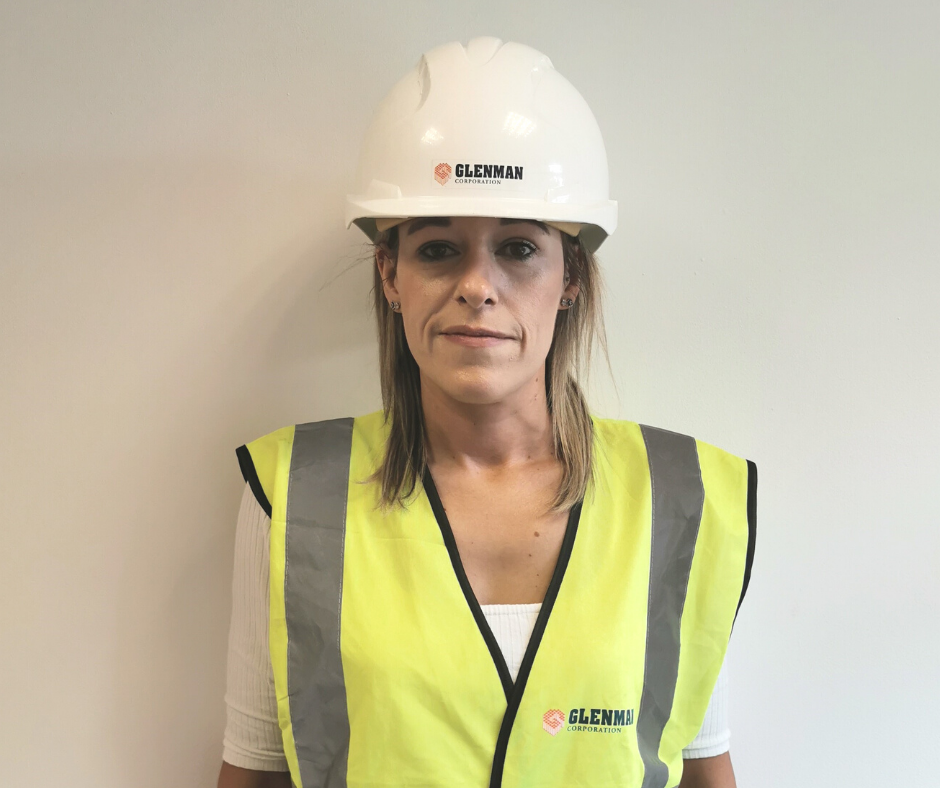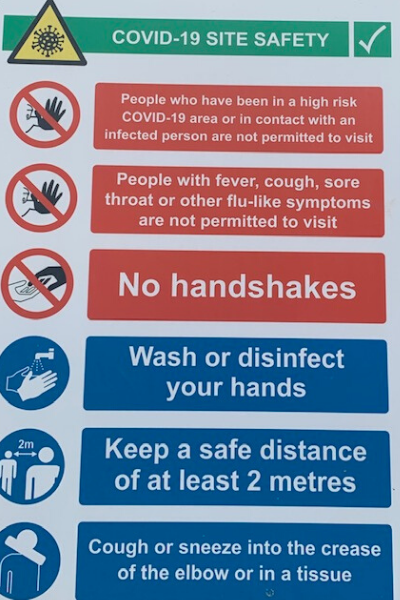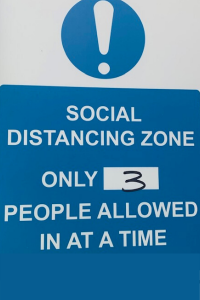Health And Safety In Construction In The Age Of COVID-19
We are all still in the process of adjusting our lives to the COVID-19 pandemic. Here, Annemarie Clayton gives her appraisal of the impact it has had on the building construction sector. Annemarie is the Health, Safety, Environmental and Quality Manager for Glenman Corporation Ltd. She ensures that all management systems are kept up to date to comply with OHAS 18001, ISO 9001 and ISO 14001 and that company policies and procedures are being followed. She also conducts Environmental, Health and Safety Audits and Quality Audits across all of our sites, offering site teams guidance on legislation and industry best practice.

What have you found most challenging during the COVID-19 pandemic?
I think that COVID-19 is a new challenge for all Health and Safety Professionals, regardless of what industry they work in. It is something that the world has never come across before, and there were no definitive answers during the onset of the pandemic because there was very little known about the virus, how it was transmitted or control measures to prevent transmission.
I did anticipate at the beginning of the pandemic that there would be a lockdown in the UK, and I did think that the Government would also order all construction sites to close. When construction sites weren’t mentioned in the list of businesses that were to close, this generated a lot of questions from staff and Sub-Contractors asking if the sites were to remain open. Everything was still very much up in the air and we were debating whether to shut sites or not.
The release of the Construction Leadership’s Site Operating Procedures was very helpful, but the guidance needed to be analysed to ensure that it could be implemented on site. I found that I had to watch the news every single day, as well as the COVID-19 daily briefings in case any of the guidelines changed.
Various members of staff were also required to self-isolate due to experiencing symptoms associated with COVID-19 at the beginning of the pandemic before full testing was available for those experiencing symptoms. This involved ensuring they were provided with the correct information regarding their own self-isolation as well as the requirement for others in their household to also isolate and ensuring continuous communication was maintained to monitor their symptoms.
Even though construction sites were permitted to remain in operation, we as a business had to close some of our sites due to factories and suppliers shutting down and not being able to get materials and Sub-Contractors stating that they did not want to work on site during the pandemic.
I continued to work during the lockdown, devising COVID-19 policies and risk assessments, answering Client queries regarding our control measures and procedures, ensuring that sites that remained open had effective control measures in place and, reviewing Sub-Contractors RAMS to ensure they have incorporated the CLC’s Site Operating Procedures into their safe system of work. There was also the challenge of sourcing hand sanitiser stations and signage as the majority of suppliers had sold out, so temporary signs had to be implemented and smaller bottles of hand sanitiser purchased until we received deliveries.
Due to the constant updates to the CLC’s Site Operating Procedures, Construction Phase Plans for projects have to be consistently reviewed and updated and submitted to the Client for comment.
Has the COVID -19 response resulted in permanent behavioural changes for the construction sector?
 I think it has changed behavioural changes for everyone. Not only are there the normal health and safety risks associated with the construction industry to contend with, but also the addition of control measures to prevent the transmission of COVID-19 on our projects. Everyone’s normal activities both inside and outside of work has completely changed, With the government advice at the beginning of the pandemic to remain at home and to avoid using public transport, this instilled anxiety in some people, and others did not think that the virus was anything to worry about.
I think it has changed behavioural changes for everyone. Not only are there the normal health and safety risks associated with the construction industry to contend with, but also the addition of control measures to prevent the transmission of COVID-19 on our projects. Everyone’s normal activities both inside and outside of work has completely changed, With the government advice at the beginning of the pandemic to remain at home and to avoid using public transport, this instilled anxiety in some people, and others did not think that the virus was anything to worry about.
With the introduction of additional control measures in relation to COVID-19, it also means that additional observations are required by Site Management to ensure that operatives on site are working to their safe system of works and adhering to the two metre social distancing rules. Because social distancing is not the “norm” it involves reminding people about social distancing.
This is why regular tool box talks on COVID-19 and social distancing are being conducted on site and all new operatives and visitors are also briefed a COVID-19 induction and the tool box talks. All new persons being inducted are also required to complete a COVID-19 Questionnaire which asks them questions relating to any experienced symptoms and other persons in their household. These are quite personal questions, but are required to be asked to ensure that the risk of transmission is kept to a minimum.
What feedback have you received from staff on site regarding behavioural changes? Are their jobs more difficult to do now or have they adapted easily to the new rules around COVID-19?
 Site teams have said that there has been a massive change on site, especially going from conducting inductions and tool box talks in the canteen and meeting room to being outdoors. This also requires a lot more organisation and planning.
Site teams have said that there has been a massive change on site, especially going from conducting inductions and tool box talks in the canteen and meeting room to being outdoors. This also requires a lot more organisation and planning.
Client meetings are also being held virtually via Microsoft Teams or Zoom, which can also be challenging if you are trying to demonstrate something on site and it can only be conveyed in photographs or video. As there are limited visitors to site from the Client and other external parties to review works being undertaken on site, photographic reports need to be collated and sent through which can be time consuming.
It is also challenging sequencing works to ensure that crossover of trades in working areas is eliminated or kept to a minimum wherever possible and that the welfare facilities are regularly cleaned, persons on site are practicing good hygiene practices and adhering to the signage stating maximum numbers of person to use any of the facilities at any one time.
